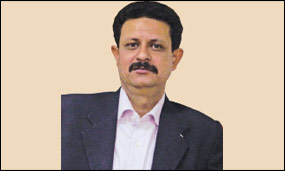
Our excavators are highly fuel-efficient and drastically reduce cost-per-tonne.
What is the present demand- supply scenario?
There has been a considerable dip in excavator sales due to various reasons. This year the excavator market has been slow, and the total size should be somewhere around 10,500 units whereas last year, the market size was over 13,000 units.
Do you have any specific focused client segments?
Our focus is on both retail and corporate customers. Earlier, Luigong traditionally had been selling more to corporates but in the last few years, we have been focussing on retail, too. Currently the focus is more on the retail segment as orders from the corporate houses, due to the infrastructure slowdown, are not forthcoming. The retail segment still drives the demand, especially in quarrying.
How good are prospects from the mining sector?
As of now, we are not selling any excavator to the mining sector. We have a model called CLG 950 but we have not introduced it yet in India.
Will you be manufacturing excavators in India?
Yes. Luigong is here in India for the long haul. We are not going to be small operators. This year, we did a lot of streamlining of manufacturing processes and the main focus now is on localisation. We want to be less dependent on imports, and by end of the first half of 2014.
What are the major features of your excavator range?
Internationally, we compete with the best brands in the world, so our excavators are designed and built complying with the quality, high standards and specs. So we are trying to maintain quality, specs and features to match those kinds of machines in India too; this of course means our machines are not inexpensive.
We are very particular about fuel efficiency. If you see excavators in India, fuel efficiency is a problem. Our main selling point for excavators is that they are highly fuel- efficient. We have put a lot of stress on the quality of engine, and seen how well the hydraulic systems match the engine. Apart from that, we have done joint R&D with oil companies; during Excon, we launched Luigong genuine oils.
How do you look at 2014 and after?
I think that the first half of 2014 will be slow but we are hopeful that in the second half, things will start moving, after the election. I am very optimistic about a complete turnaround in 2015.
By that time, will you be augmenting dealer and service capability?
We have covered almost all of India, now we are trying to consolidate. We plan to make dealers stronger and bigger, make them open more outlets and stock more spare parts. We will be fully geared to meet the demand.
What are the main challenges you face in the excavator market?
The first thing is, the market is sinking, and secondly, our presence in the excavators market is not very big. We do not want to sell for the heck of it, we want to offer solutions; if there is a crusher, and one needs an excavator and a loader. So we try to package the complete solution. It is going to take time but it is going to happen.
The cost per- tonne concept seems to have penetrated the user segment. Would you agree?
The major operating cost of an excavator is the fuel and that is something we have taken care of. We have lowered fuel consumption by 20 per cent and that drastically reduces the cost per tonne. We have tried to keep all the spare part prices under control so that the operating cost does not go up. Owning price may go up but operating costs, we have tried to minimise as much as possible. So the customer?s cost- per- tonne does not get affected and he should get maximum benefit from us.
What about machine control technologies?
We are on the threshold. By the start of next year, we will begin the use of telematics.


 +91-22-24193000
+91-22-24193000 Subscriber@ASAPPinfoGlobal.com
Subscriber@ASAPPinfoGlobal.com